hankyoreh
Links to other country sites 다른 나라 사이트 링크
[Reportage] Inside N. Korean refugee protection center
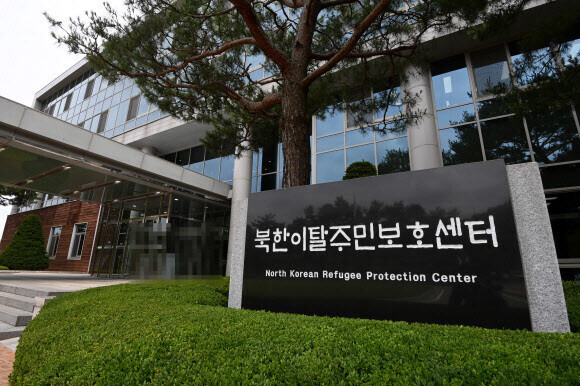
The North Korean Refugee Protection Center, where North Korean defectors who enter the South first stay before venturing out into society, has been opened up to outsiders for the first time in seven years.
This is only the second time that the National Intelligence Service (NIS) has opened up its facility for questioning defectors, after a previous opening in 2014 amid a controversy over alleged human rights infringements.
Meeting reporters Wednesday at the center in Siheung, Gyeonggi Province, NIS Director Park Jie-won said he was “well aware that some people still associate the Protection Center with past cases of fabricated espionage allegations.”
“As the NIS marks its 60th anniversary, we have opened up the facility to show the South Korean public that the Protection Center has moved beyond its past and is proceeding toward the future,” he explained.
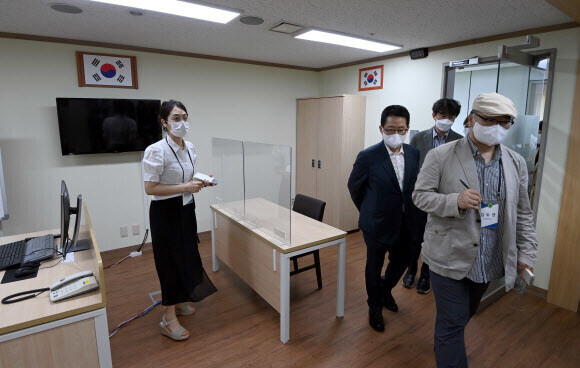
The Protection Center is categorized as a Level A state security targeted facility, with strict controls on movements in and out. It is capable of accommodating up to 500 people at a time, although fewer than 10 defectors are staying there at present.
Reporters visiting the center Wednesday were able to view nearly all the areas used by defectors during their stay, including the intake room (the first stop for defectors arriving at the center), living area, questioning room, office of the human rights protection officer, library, education room, music room, restaurant, gymnasium, computer education room, daily essential support room, and children’s play area.
The intake room is where defectors first undergo a search, as their personal effects are screened with security equipment. Strip searches have rarely taken place since the security equipment was introduced in 2017, although a separate room for such searches is available next door as needed.
The most frequently confiscated items here are pharmaceuticals that arriving travelers are not allowed to bring into South Korea. A center official explained that in some cases, defectors have arrived with Japanese wintergreen and dead hedgehogs, which they claimed were for medicinal purposes.
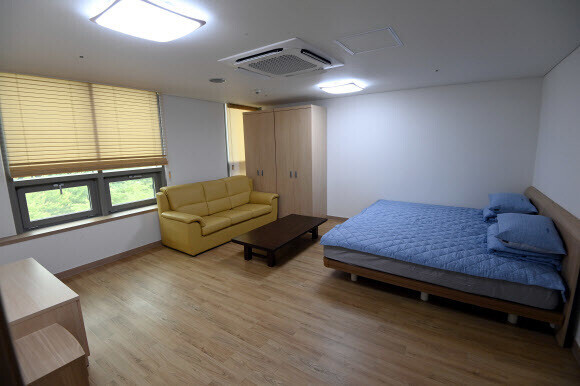
After a two- to three-week period for rest and treatment of health issues, arriving defectors undergo five to 10 days of questioning to verify their identity.
With questions to determine their reasons for defecting and whether they are arriving under false pretenses, defectors can stay here for up to 90 days before the decision is made on whether to grant protection. That questioning period lasted as long as 180 days before a legal amendment in 2018.
In the past, the “living/questioning area” was a source of controversy over the confinement of defectors in rooms by themselves. That area has since disappeared, and the doors to the questioning room have been replaced with transparent ones.
Before and after questioning, all defectors are interviewed by a human rights protection officer recommended by the Korean Bar Association and Korean Women Lawyers Association to determine whether any irregularities occurred during the questioning process.

Under a new system, minors are accompanied by “trusted relations.” The two systems have been in effect since last year, the center explained.
Defectors must verify and sign summaries of the major questioning results; audio and video recordings of questioning are permitted with the consent of the parties involved.
These measures were put in place after an incident involving a false confession by Yu Ga-ryeo amid violent and coercive treatment during her questioning with her brother Yu Woo-sung, who had been subjected to emergency arrest in an NIS investigation on fabricated charges.
In 2014, the NIS renamed what had previously been known as the Joint Interrogation Center (JIC, established 2008), implementing improvements to the facilities and questioning in what was now called the North Korean Refugee Protection Center.
“Among the 7,600 people who have undergone questioning at the Protection Center between 2014 and this year, there has not been a single confirmed or alleged case of human rights infringements,” Park stressed.
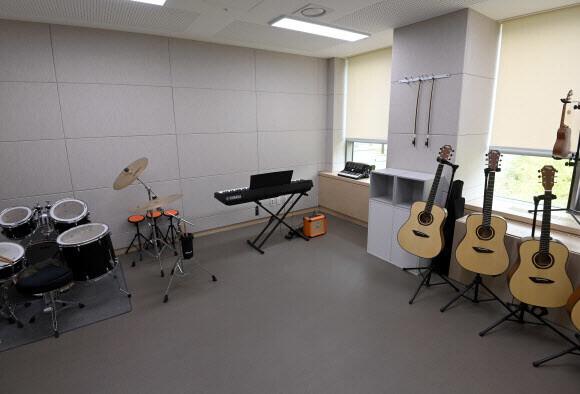
Since the Yu Woo-sung espionage fabrication case, the center has not conducted espionage investigations. Instead, it focuses solely on administrative questioning meant to identify non-defectors who disguise themselves as defectors in order to receive settlement funds.
Around 180 non-defectors have been identified during questioning since 2008, while 11 espionage agents disguised as defectors have been caught by the center and convicted in court, the NIS said. Yu received a final acquittal by the Supreme Court in 2015 after it emerged that the NIS and prosecutors had falsified evidence against him.
The living area exists separately from the questioning room. Rooms are available in single, two-person, four-person, and six-person types, with single rooms associated when requested by the resident. Each room has a bathroom, television, desk, refrigerator, and other amenities.

A special living area is provided to senior-level defectors and suspected non-defectors, who face relatively longer questioning periods. They include amenities not available in the ordinary living area, including a bed, sofa, table, dinner table, microwave, and washing machine. The closed circuit cameras that have been in place in the living/questioning area in the past have been removed.
Residents are provided with 45 to 52 basic essential items, including clothing. Upon their release, male residents receive a suit, while female ones receive an outfit of their preferred design.
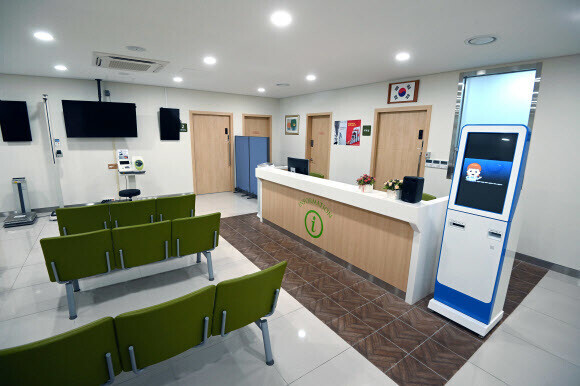
The center explained that defectors can undergo basic computer, language, and musical instruction while at the center. Residents are provided the same meals as the center’s employees, and around a dozen healthcare professionals work at an infirmary with OB/GYN, family medicine, and dental clinics to tend to defector health.
By Kim Ji-eun, staff reporter
Please direct comments or questions to [english@hani.co.kr]

Editorial・opinion
![[Column] Will Seoul’s ties with Moscow really recover on their own? [Column] Will Seoul’s ties with Moscow really recover on their own?](https://flexible.img.hani.co.kr/flexible/normal/500/300/imgdb/original/2024/0513/5917155871573919.jpg) [Column] Will Seoul’s ties with Moscow really recover on their own?
[Column] Will Seoul’s ties with Moscow really recover on their own?![[Column] Samsung’s ‘lost decade’ and Lee Jae-yong’s mismatched chopsticks [Column] Samsung’s ‘lost decade’ and Lee Jae-yong’s mismatched chopsticks](https://flexible.img.hani.co.kr/flexible/normal/500/300/imgdb/original/2024/0512/3017154788490114.jpg) [Column] Samsung’s ‘lost decade’ and Lee Jae-yong’s mismatched chopsticks
[Column] Samsung’s ‘lost decade’ and Lee Jae-yong’s mismatched chopsticks- [Correspondent’s column] The real reason the US is worried about Chinese ‘overcapacity’
- [Editorial] Yoon’s gesture at communication only highlights his reluctance to change
- [Editorial] Perilous stakes of Trump’s rhetoric around US troop pullout from Korea
- [Guest essay] Preventing Korean Peninsula from becoming front line of new cold war
- [Column] The state is back — but is it in business?
- [Column] Life on our Trisolaris
- [Editorial] Penalties for airing allegations against Korea’s first lady endanger free press
- [Editorial] Yoon must halt procurement of SM-3 interceptor missiles
Most viewed articles
- 1Ado over Line stokes anti-Japanese sentiment in Korea, discontent among Naver employees
- 2[Column] Samsung’s ‘lost decade’ and Lee Jae-yong’s mismatched chopsticks
- 3Korean opposition decries Line affair as price of Yoon’s ‘degrading’ diplomacy toward Japan
- 4US has always pulled troops from Korea unilaterally — is Yoon prepared for it to happen again?
- 5Korean auto industry on edge after US hints at ban on Chinese tech in connected cars
- 6[Editorial] Yoon’s gesture at communication only highlights his reluctance to change
- 7[Correspondent’s column] The real reason the US is worried about Chinese ‘overcapacity’
- 8[Column] Will Seoul’s ties with Moscow really recover on their own?
- 9[Photo] Korean students protest US complicity in Israel’s war outside US Embassy
- 101 in 3 S. Korean security experts support nuclear armament, CSIS finds